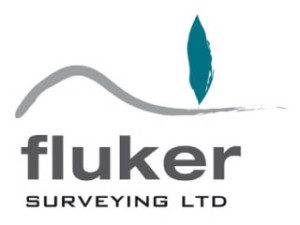Working with Builders, Architects, and Engineers: How Surveyors Keep Projects Aligned
When you begin a building, renovation, or development project in Auckland, success depends on a well-run project, which is the result of coordination between multiple professionals. Builders, architects, engineers, and surveyors all bring their own expertise, but the role of the surveyor is often underestimated. In practice, the surveyor is the first professional on site and one of the last to leave, ensuring accuracy, compliance, and collaboration throughout the project.
At Fluker Surveying, we describe ourselves as the bridge between vision, design, and execution. Here’s how surveyors support each stage of a project and why our role is essential in connecting various fields.
Establishing the First Point of Truth
Before any sketches are drawn or foundations poured, surveyors provide the baseline information that other professionals rely upon. A survey captures a detailed picture of the land, including:
- Boundary positions and legal title information
- Elevation levels and contours of the site
- Natural features such as trees, waterways, and slopes
- The location of important access points and service points such as sewer, stormwater, and water supply
This data is transformed into a topographic or detailed survey [internal link: blog], which then becomes the platform for architects and engineers to create designs that comply with council requirements and physical site constraints. By setting this foundation early, surveyors reduce the risk of costly redesigns or construction delays.
Enabling Architects to Design with Confidence
Architects are responsible for bringing a client’s vision to life. To do this, they need certainty about what is possible on a project site. Without accurate survey data, even the best architectural design can falter. Key risks include:
- Non-compliance with setback or height restrictions under the Auckland Unitary Plan
- Poor alignment with natural features such as slope or outlook
Surveyors support architects by providing a true picture of the land. This allows architects to optimise orientation for light, privacy, and views, respecting zoning and planning regulations. The result is a design that is both creative and compliant.
Providing Engineers with Critical Information
Structural and civil engineers take the architect’s design and ensure it is functional, safe, and buildable. Surveyors feed engineers with precise measurements for:
- Earthworks calculations and cut-to-fill volumes
- Foundation depths and retaining wall alignments
- Drainage connections and stormwater planning
- Road and access layouts in subdivisions
Inaccurate data at this stage could undermine the entire engineering process. Surveyors make sure that what is drawn on the plan matches what exists on the ground, reducing the chance of expensive errors once construction begins.
Supporting Builders On Site
When construction moves forward, the surveyor’s role shifts from providing information to marking out the works. Set-outs involve marking or pegging the exact location of the proposed structures, driveways, fences, and any other landmarks. Builders and contractors depend on this accuracy to position work correctly.
As construction progresses, surveyors often return to the site to provide additional set-outs or to check compliance with building consent conditions. Finally, an as-built survey [internal link: blog] is undertaken once works are complete. This confirms that construction matches the approved design and gives the council the documentation it needs to issue final approvals.
Acting as the Link Between All Parties
A large project involves many moving parts and numerous handovers. The surveyor is often the neutral professional who connects them all. Our role includes:
- Translating architectural concepts into physical ground positions
- Confirming compliance for engineers and council regulators
- Providing builders with certainty that their work is aligned correctly
- Ensuring the client receives a project that meets the design intent and legal requirements
By bridging these disciplines, surveyors encourage communication, reduce delays, and help keep projects within budget.
Get in Touch [Button]
Why This Matters in Auckland
Every region has its own challenges in development. In Auckland, a wide variety of titles including freehold titles and cross lease titles, legal mechanisms such as easements and covenants, physical parameters such as sloping terrain, complex zoning under the Unitary Plan, and stormwater management requirements. Local knowledge is important to navigate these efficiently.
For example, a project in a mixed-housing suburban zone will have different rules on height and site coverage compared to a single-house zone. A site with a steep slope may require additional retaining structures and stormwater management. Surveyors familiar with these details ensure that the whole team is working with accurate expectations from the start.
The Value of Engaging Surveyors Early
Engaging a surveyor early in the project can make a measurable difference. Early involvement helps:
- Identify potential planning obstacles before design work begins
- Provide architects and engineers with reliable data for compliance
- Speed up council approvals through accurate documentation
- Reduce costly rework by ensuring designs and builds are aligned with site conditions
By investing in surveying from the beginning to the end, clients save time and stress later into the project.
Contact Fluker Surveying For All Surveying Needs
Surveyors are collaborators who underpin the work of architects, engineers, and builders, ensuring that projects progress with accuracy and confidence. By acting as the link between vision, design, and execution, surveyors help to create buildings and developments that are compliant, practical, and delivered on time.
If you are planning a build, renovation, or development in Auckland, involving a surveyor early in the project is one of the smartest decisions you can make.



